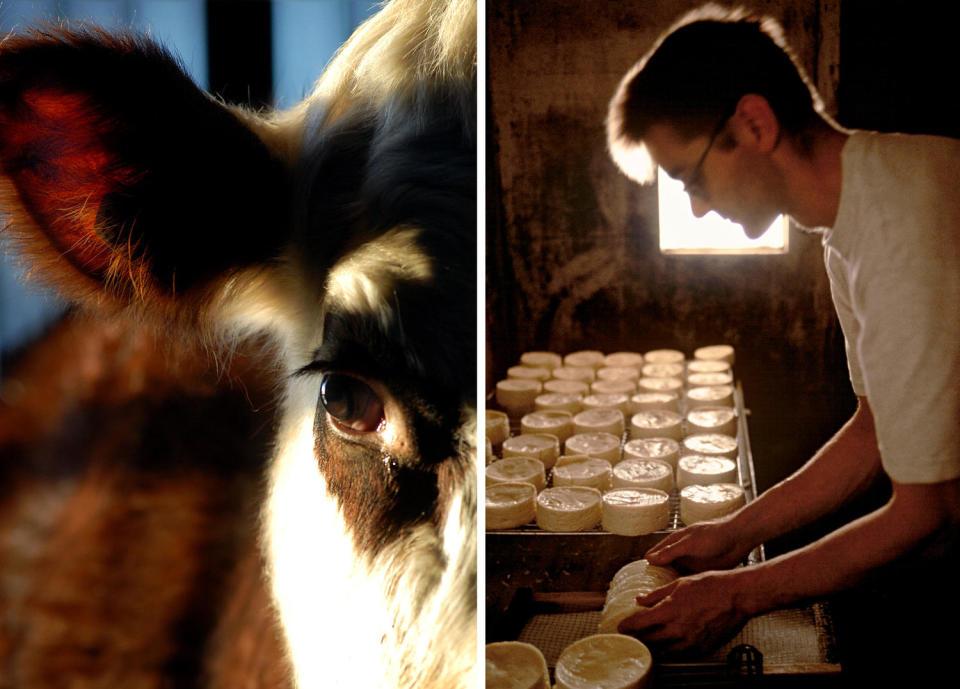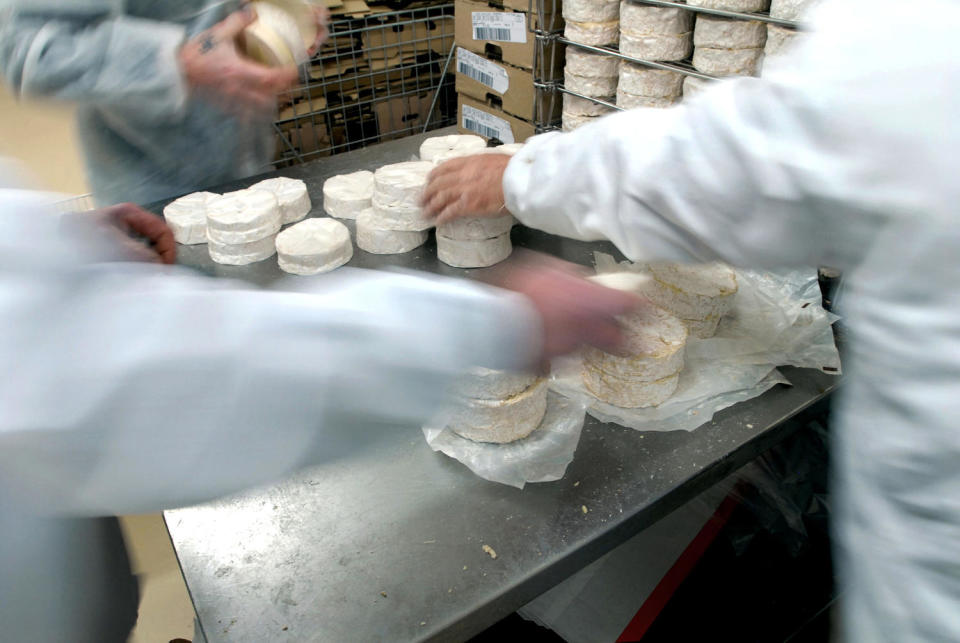Sacre bleu! Camembert and brie 'on the verge of extinction,' French scientists warn
CAMEMBERT, France — On a tiny farm tucked into the lush, green hillside of Normandy, Aude Sementzeff heats raw milk from cows up the hill until it curdles, then scoops it into molds to make a round, pearly white Camembert cheese.
For eight years, Sementzeff has been making the earthy, soft cheese in small batches to be sold in Paris stores, continuing a tradition that dates to the 18th century. So ubiquitous is Camembert in France that soldiers in the trenches of World War I ate it as part of their daily rations.
“Camembert is there at each step of our history,” Sementzeff, 41, said as she delicately salted each cheese and flipped it to perfect its rind. “So there is a strong link, I think, with French culture.”
But now this notoriously pungent delicacy is in trouble, as is brie, another celebrated French cheese enjoyed across the world.
The National Centre for Scientific Research, France’s state-run science agency, has warned that Camembert, brie and even blue cheeses “could disappear,” owing to a decline in the strains of fungi that give the beloved cheeses their unique taste, smell, color and texture.
“Blue cheeses may be under threat, but the situation is much worse for Camembert, which is already on the verge of extinction,” the research center wrote in a memo in January.
While many cheesemakers insist the problem isn’t quite that dire, they acknowledge that producing cheeses like Camembert is getting harder, a consequence in part of past efforts to engineer the perfect block.
Scientists refer to fungi’s role in cheesemaking as “delicious rot,” and it’s a critical part of the arduous process of making a Camembert, which includes several weeks of aging. It can be added early on with other enzymes when milk is heated to form curds, or sprayed on the cheese later to help the ripening process and promote the soft, white rind prized by Camembert-lovers.

In Camembert’s early days, the fungi existed naturally in the air in the damp caves where it was aged, said Emily Monaco, an American writer and cheese connoisseur who lives in Paris. She said that’s what gave each batch its own distinctive character.
“Some of them are going to be a little redder or a little bluer or a little grayer,” Monaco said. “And what people realized was that people really like the white, pristine look of Camembert.”
As a result, during the 20th century, cheesemakers stopped leaving the fungus to chance and began making it in the lab. They isolated one particular albino strain known as Penicillium camemberti that produces the perfect white rind, and soon cheesemakers globally began using it.
Benjamin Wolfe, who teaches microbiology at Tufts University and studies fermented food in his lab, said that brought advantages, such as consistency, but also downsides.
“Often when we domesticate plants — or even our pets, like dogs and sometimes cats — we’re selecting particular types that we find appealing,” he said. “And when we do that, we’re removing from the overall pool of genetic diversity.”

Over time, Penicillium camemberti is losing some of its ability to reproduce naturally. Instead, scientists are growing the fungus using asexual reproduction — not unlike planting a cutting from a flower to clone it, rather than a seed. Wolfe said growing the fungus that way is doable, but more difficult.
There’s also the longer-term concern about having just one or two strains of an organism still around: If a disease or pathogen emerges to which the remaining strain is susceptible, it could wipe out the entire population.
It’s a similar threat to the one facing other popular foods due to dwindling global biodiversity that’s being exacerbated by climate change, scientists say.
Hotter temperatures, changing rainfall patterns and more frequent extreme weather events are altering delicate ecosystems across the globe that plant and animal species rely on to survive, the U.N. says. It’s also increasing the prevalence of diseases.
In the case of cheese, scientists have started working to restore some of the genetic diversity to the fungi. Lactalis, the world’s largest dairy company and maker of the popular President Camembert cheese in France, said it was “not worried about the future of our products.”

“We are committed to preserving the biodiversity and safety of the ferments,” Lactalis said in a statement. “Our mission is the sustainability of know-how and cheese heritage, of which ferments are an integral part.”
Ironically, large industrial producers that rely entirely on lab-made fungus may have a tougher challenge in the future than small, artisan farms, where the presence of animals and lack of chemicals means there’s still a wide variety of wild-growing fungi in the environment.
Monaco, the writer, said cheese-lovers of the future may have to embrace the fact that Camembert may not all look and taste the same. She said part of the beauty of cheese is how it’s shaped by its environment, or terroir, and factors as capricious as whether the grass fed to the dairy cows got more or less sun in any given year.
“If we want things to stay the same, we’re going to have problems moving forward,” she said. “If we’re excited about the fact that as we go forward, each Camembert you try is going to have its own personality and flavor, then that’s what we can look forward to.”
This article was originally published on NBCNews.com

